ABSTRACT
The Internet of Things (IoT) allows machines and devices in the world to connect with each other and generate a huge amount of data, which has a great potential to provide useful knowledge across service domains. Combining the context of IoT with semantic technologies, we can build integrated semantic systems to support semantic interoperability. In this paper, we propose an integrated semantic service platform (ISSP) to support ontological models in various IoT-based service domains of a smart city. In particular, we address three main problems for providing integrated semantic services together with IoT systems: semantic discovery, dynamic semantic representation, and semantic data repository for IoT resources.
To show the feasibility of the ISSP, we develop a prototype service for a smart office using the ISSP, which can provide a preset, personalized office environment by interpreting user text input via a smartphone. We also discuss a scenario to show how the ISSP-based method would help build a smart city, where services in each service domain can discover and exploit IoT resources that are wanted across domains. We expect that our method could eventually contribute to providing people in a smart city with more integrated, comprehensive services based on semantic interoperability.
RELATED WORK
The term semantic, started by Berners-Lee in 1998, is a framework technology for automated processing for not just between machines, but also between humans and machines through interpretation of meanings to resources. Actually, the goal of the Semantic Web is to allow both humans and machines to understand through semantic interoperability based on well-defined meanings in the current web. Currently, the Semantic Web is standardized by the World Wide Web consortium (W3C).
IOT-BASED SERVICE INTEGRATION ONTOLOG
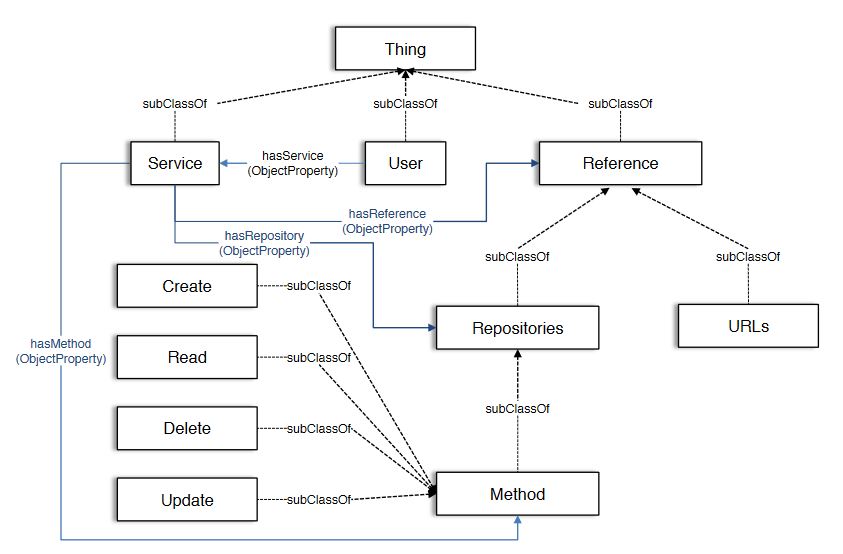
Figure 2. A schema of the IoT-based service integration ontology (IIO) to support ontologies created from various IoT-based service domains
In this section, we describe the IoT-based service integration ontology (IIO). The IIO is a top-level ontology to store and handle the ontologies added from each service domain to express their knowledge. We divide the entire knowledge of IoT-based services into three abstract concepts: service, user, and reference, as shown in Figure 2.
INTEGRATED SEMANTIC SERVICE PLATFORM
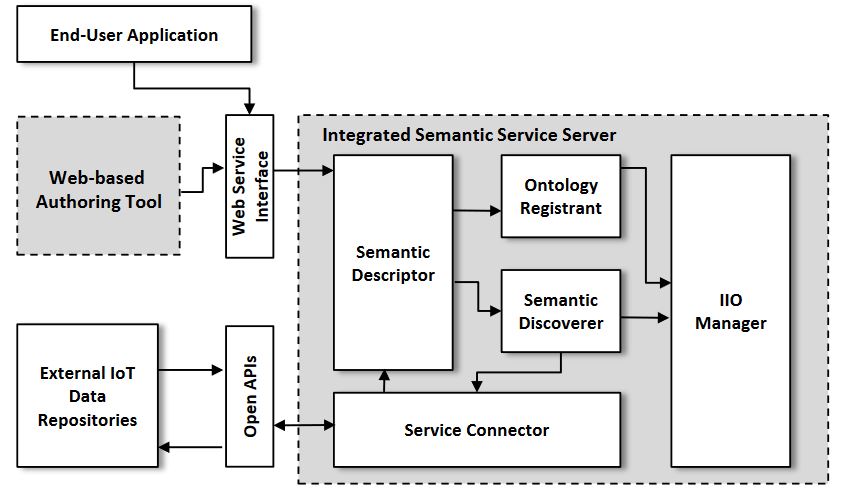
Figure 4. System architecture of the ISSP
The ISSP consists of two main software packages: the web-based authoring tool and the integrated semantic service server (ISSS), as shown in Figure 4.The web-based authoring tool is used to create an ontology using a web browser to add service domain knowledge within a smart city into the IIO without any development tool for the ontology. The web-based authoring tool provides four main input fields, as follows: (1) Service domain topic; (2) Ontology schema and relationship; (3) Reference resources; and (4) semantic web rule language (SWRL)-based rule.
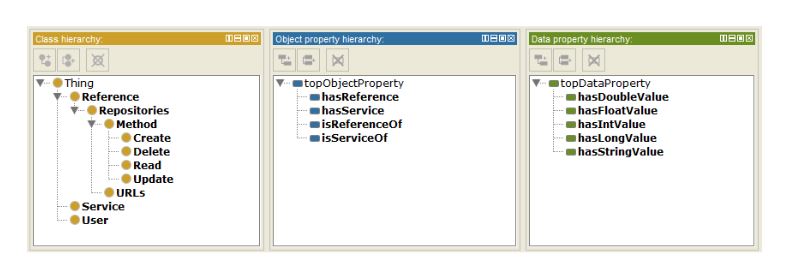
Figure 6. Hierarchy of classes, object properties, and data properties of the IIO: (from left), class hierarchy, object properties hierarchy, and data properties hierarchy
Figure 6 shows the hierarchy of classes, object properties, and data properties of the IIO using protege 4.3. It allows specifying explicitly the ontology created from the web-based authoring tool. The IIO supports various primitive data types of IoT resources in each service domain using explicit data properties.
PERFORMANCE EVALUATION
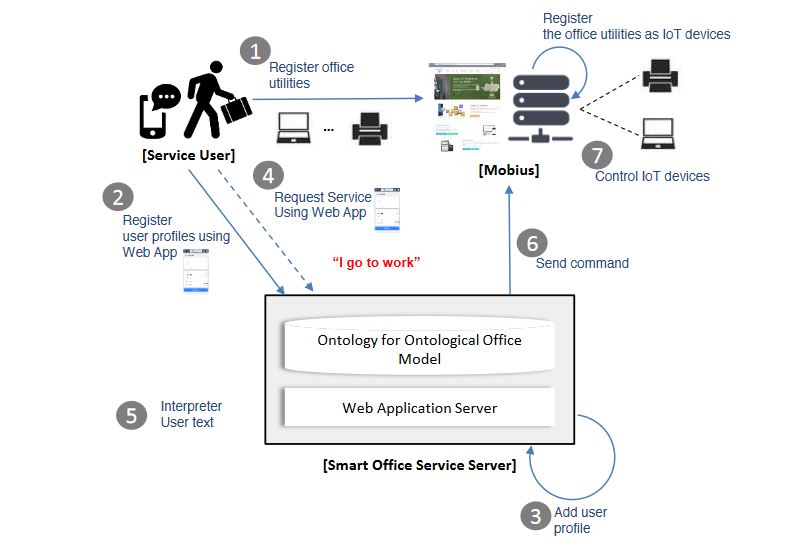
Figure 7. The service flow for the prototype service for the smart office
A prototype smart office service is developed for the evaluation of the ISSP. The service provides a personalized office environment through semantic interpretations of inputted user text through the web app. To provide the service, it operates in two modes: (1) user profile registration mode; and (2) service request mode. The user profile registration mode is used to register user profiles, such as an ID, password, seat number, and user preset, for his or her personalized office environment, such as office actions and their corresponding devices and commands. The service request mode is used to request a smart office service based on the registered user profile and preset. The prototype service consists of the web app and ontological office model. Figure 7 shows a service flow for the prototype service.
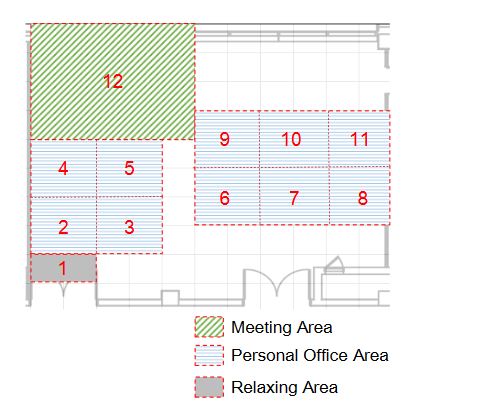
Figure 8. Classification of the space according to the characteristics
The ontological office model is used to interpret the inputted user text and to control office utilities for the service. In the service, the ontological office model is designed based on an office located in our building (Korea Electronic Technology Institute). The office consists of personal office areas, a meeting area, and a relaxing area, as in Figure 8.
DISCUSSION
As we explained regarding the importance of interoperability across the entire service domain (e.g., smart cities) in this paper, we need to provide an integrated service system infrastructure that can handle the whole service knowledge of IoT-based service domains to share IoT resources between service domains. For providing such integrated service system infrastructures, we have developed the ISSP; however, we need to consider additional practical issues.
CONCLUSIONS
In this paper, we have presented an integrated semantic service platform (ISSP) to support ontological models in various IoT-based service domains. In order for the ontological models to be a formal, explicit representation of knowledge within a service domain, we have developed a web-based authoring tool with which we can create an ontology for a service domain. We have also developed an IoT-based service integration ontology (IIO) as a top-level ontology to maintain and handle the ontologies created by the web-based authoring tool. In addition, we have created a semantic descriptor for semantic translation of the IoT resources used in each service domain.
Finally, we can perform semantic discovery-based IoT device monitoring control by working with our external IoT service platform, Mobius. With the proposed method, we have tried to address three challenging problems for applying semantic technologies to highly-distributed, heterogeneous and resource-constrained IoT-based systems: integrated semantic discovery in highly-distributed IoT domains, dynamic semantic expression between a large number of IoT resources in real time, and a semantic data repository to archive a huge amount of data collected from IoT devices. To show the practical feasibility of our proposed method, we have developed a prototype service for a smart office, which can provide a preset, personalized office environment, for example office utilities or lighting can be automatically turned on or off according to user text input sent from his or her smartphone.
Through the evaluation, we have shown that the ISSP can allow the prototype service to appropriately perform semantic discovery, dynamic translation, and eventually IoT device control in real time working with our IoT service platform. We have also discussed a scenario for ISSP-based semantic interoperability to provide users with integrated and comprehensive services across service domains in a smart city. Accordingly, we can conclude with confidence that the ISSP-based method can eventually contribute to realizing semantic interoperability across the entire service domain based on IoT-based systems and semantic technologies.
Source: Cambridge University
Authors: Minwoo Ryu | Jaeho Kim | Jaeseok Yun
>> 200+ IoT Led Projects for Final Year Students
>> IoT Environmental Monitoring System for Smart Cities Projects for Engineering Students
>> IoT Software Projects for Final Year Students